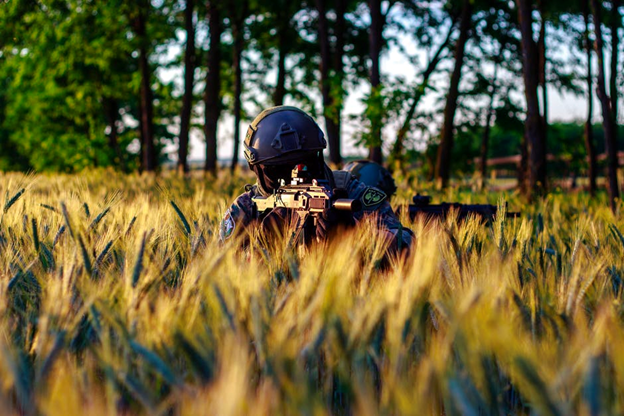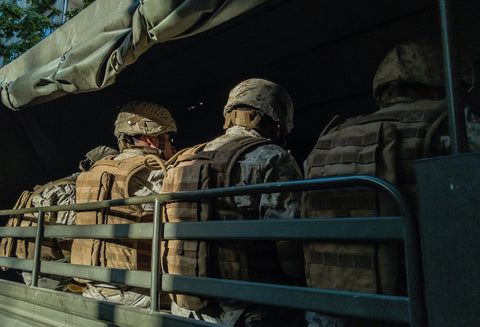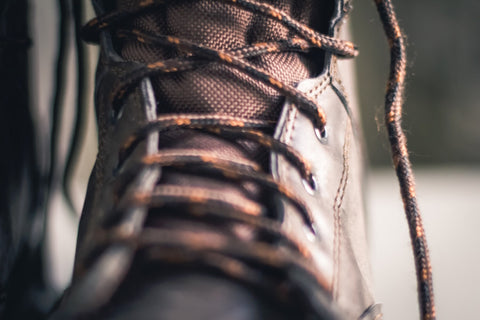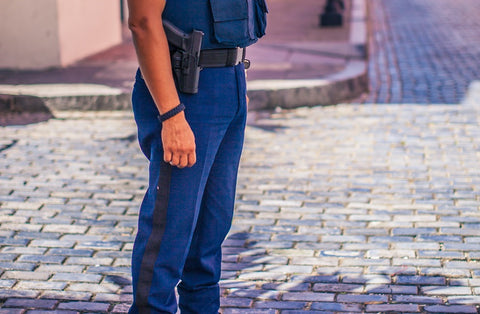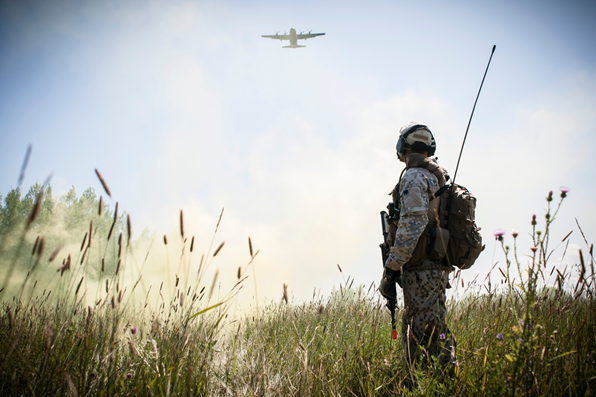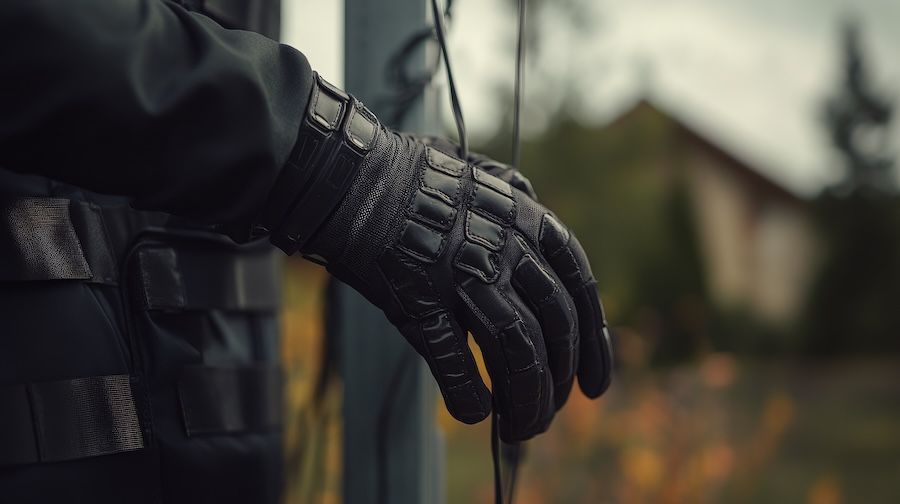How Tactical Headgear and Eyewear Enhance Officer Safety in the Field
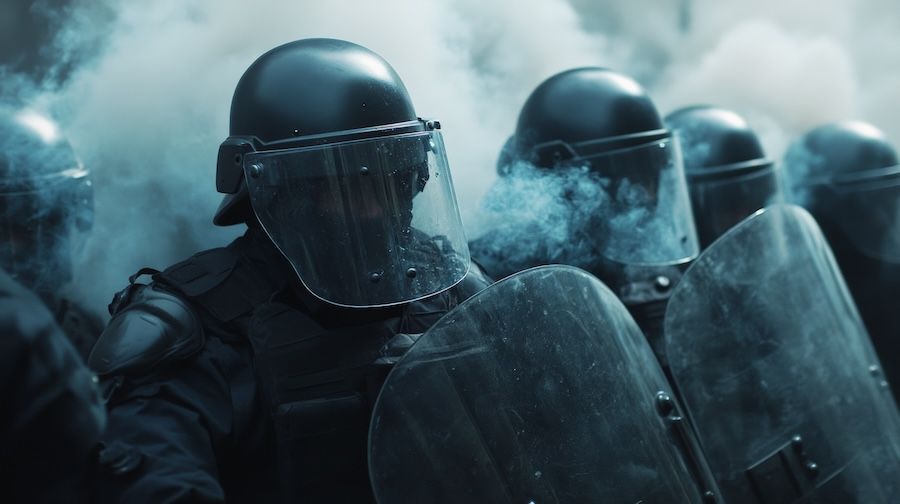
You can be the most experienced officer out there, but the reality is: even the best training doesn’t stop a stray shard of glass, an overhead impact, or a flash of blinding light. What can help is what you’re wearing on your head. Tactical headgear and eyewear aren’t just accessories, they’re part of your survival system.
You don’t just gear up to look the part. You do it so you can make it home.
From ballistic helmets to communication headsets, each piece of equipment is designed to maximize protection and performance. But it’s not just about providing a shield, it’s about enhancing situational awareness and ensuring that officers can do their job efficiently, no matter what risks they face.
Let’s dive into why tactical headgear and eyewear are essential for officer safety, and how they help officers stay one step ahead in high-risk situations.
Protection Begins at the Top
Head trauma is one of the most common and most dangerous injuries officers face in high-risk scenarios. Whether it’s from falls, debris, impact weapons, or even ballistic threats, the head is incredibly vulnerable.
A good tactical helmet doesn’t just shield your skull; it’s a whole protective ecosystem.
Modern tactical helmets, like bump or ballistic helmets, offer high-level protection without the clunky weight. They’re designed to withstand significant impact while still allowing for movement and long-wear comfort. Most come with modular rails and mounts so you can attach lights, visors, or cameras.
What’s changed over the years? Materials. You’re no longer stuck with heavy, rigid options. Today’s models use high-strength polyethylene or aramid fibres - lightweight, breathable, and still tough enough to absorb serious shock.
And comfort matters more than you might think. An ill-fitting helmet will shift, strain your neck, or even distract you in a critical moment. That’s why fit systems and padding tech have gotten better. Suspension systems distribute weight, reduce fatigue, and give you one less thing to worry about.
When Vision is Your First Line of Defence
Ever had your eyes burn from blowing dust or been caught off guard by sunlight bouncing off a windshield? Didn’t feel nice, did it?
Vision can be a matter of life or death in high-risk environments, and tactical eyewear is the answer to a lot more than you’d think.
It’s not just about UV protection - though that is a plus. It’s about preserving your sight when seconds count. Whether you're responding to a riot, entering a burning structure, or just navigating unpredictable terrain, your eyes need to stay clear and alert.
These glasses or goggles are designed to protect the eyes from debris, shrapnel, and even direct gunfire in certain scenarios. Beyond the obvious protective qualities, ballistic eyewear is designed to offer clear and undistorted vision, crucial for identifying threats and making quick decisions.
Think of it as a helmet for your eyes, one you forget you’re wearing until something hits it.
Many styles are compatible with prescription inserts, come with interchangeable lenses for different light conditions, and have anti-fog coatings to handle sweat and weather.
It's about more than safety, it's maintaining visibility when chaos is unfolding in front of you.
Communication Isn’t a Luxury
In high-pressure situations, miscommunication can be lethal. Tactical headsets, especially integrated systems built into helmets, ensure you can hear and be heard, even when everything around you is working against that.
Whether it's coordinating a perimeter or calling for backup, clarity matters. The best systems offer noise reduction to filter out background chaos (sirens, shouting, gunfire) and bone-conduction mics that work even when wearing respirators or masks.
For military and law enforcement units, comms are often integrated into the helmet and protected from environmental damage. Wires are tucked away, devices are waterproof or resistant, and controls are designed for gloved use. It's smart design made to match real-world needs.
Modularity Makes a Difference
You’re not carrying the same gear every day. Your mission changes, so your gear should too. That’s where modular headgear comes in.
Modern helmets come with side rails, Velcro panels, shroud mounts, and more, letting you customize your setup with night vision, cameras, strobes, ID patches, or protective visors.
No, it’s not an overkill, it’s adaptation.
The best setups allow you to add or remove attachments in seconds, meaning you can switch from riot control to night ops without missing a beat. It’s the kind of flexibility that not only saves time but could save lives.
Designed for the Real World
Real life happens in the rain, the mud, the heat, and sometimes all at once. Tactical gear has to live up to that.
Fog-resistant coatings, sweat-wicking liners, adjustable fits, and shatter-proof lenses all help the equipment stay functional when the conditions are anything but ideal.
Ever had a cheap pair of goggles fog up just as you stepped into a gas-filled hallway? Not great. Investing in the right equipment isn’t about bells and whistles. It’s about reliability when you’re on the clock and under pressure.
Making Smart Gear Choices as a New Officer
If you’re new to the field, building your kit can be overwhelming. There are hundreds of helmet and eyewear options out there, and it’s not always clear where to start.
Here’s the truth: You don’t need the most expensive gear, but you do need gear that fits your job. If you’re working in urban enforcement, a lightweight bump helmet and high-visibility eyewear might be your best bet. If your role is more tactical or rural, you’ll want something that offers ballistic protection and night-vision compatibility.
Ask teammates what they’re using. Try before you buy. And always think in terms of worst-case scenarios. If your gear wouldn’t hold up in your most dangerous situation, it’s most likely not good enough.
Veteran Lessons: Field-Tested Favourites
Talk to any veteran officer, and they’ll tell you: gear that works in theory doesn’t always work in practice.
A lot of pros gravitate toward gear that’s simple, modular, and doesn’t require much maintenance.
Helmets with quick-adjust fits, eyewear that sits comfortably for hours, and comms gear that doesn't cut out when you sweat aren’t luxuries. They’re hard-earned preferences.
Some tips from the field: Always carry a backup lens. Use lens cloths, not your sleeve. Mark your helmet with identifying info in low-light-visible tape. Store everything where you can grab it blindfolded. These small tricks add up in big ways.
Future-Forward: What’s Coming Next
The gear is only getting better. Smart helmets that integrate GPS, thermal imaging, and real-time data sharing are already in development. Ballistic eyewear with heads-up displays and auto-adjusting lenses is no longer sci-fi.
As tech evolves, the balance between protection and functionality will keep shifting in your favour. Lighter materials, smarter systems, and seamless integration will mean less to carry and more to rely on.
But at the core, the mission stays the same: stay safe, stay sharp, and always be ready.
Whether you’re gearing up for your first day or upgrading after years in the field, the right tactical headgear and eyewear do more than protect you. They work with you. They move with you. And when things go sideways, they help you get through it.


